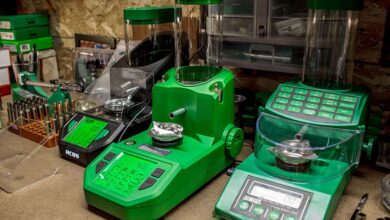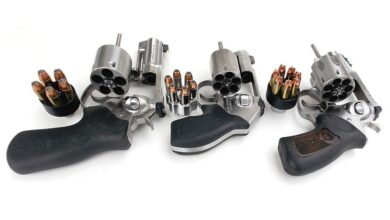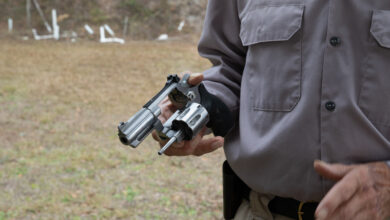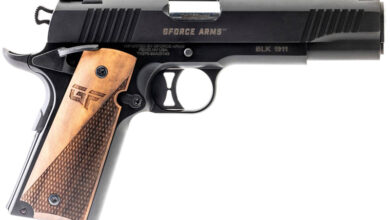Essential Gear for Firearms Courses

If you haven’t attended a good firearms class, I would encourage you to try it out. Classes focus on different things, including firearm basics, handling, moving while shooting, speed, and a ton of other topics. Over the years, I’ve attended a lot of law enforcement training and civilian firearms classes. Regardless of the type of training, there are a few items I have learned that can be helpful.
The first firearms class I ever took was long before I attended the police academy. It was for handguns, so I took my handgun and ammo, simple right? This was all new to me at the time and I didn’t pay a lot of attention to the small print with all the info about the class. My plan was to get signed up and figure the rest out when I got there.
I had ear protection but no safety glasses, holster, or the right amount of ammo. Those were the minimum requirements for this class. But others had much more equipment than the minimum, and I started paying more attention after that. Most classes will list what items you need to bring. Unless they specifically say not to bring additional items, some things would be good to add to your kit.
A Range Bag for All the Little Things
If you plan to hit the range, a range bag is a good idea regardless of the training you attend. It’s a great place to keep those items you need. If you’re anything like me, those little items tend to walk off and disappear if you don’t have a dedicated place for keeping them. It doesn’t have to be a large bag, but it should easily hold the essential items you need at the range.
One of my favorite range bags is the GPS Large Range Bag. This bag has a ton of compartments for keeping all your gear organized. There are ammo dump trays that pull out of the bag and everything from small to large pockets. This holds all my gear, but there are a ton of options for those wanting something smaller or larger. I would recommend compiling all the gear you plan to put in a bag before buying one. This will help ensure you get the right size.
Shooting Gloves
Most training classes will not list gloves as an item to bring. But if you plan to shoot all day or, in many cases, for multiple days in a row, gloves are nice to have. I never wore gloves until I started working in law enforcement. Many unexpected things are hard on your hands when you don’t have gloves on. When you’re out on the range, the same thing is true. Guns get hot, and slings, magazines, and other items start to wear on your hands.
They also help you grip the firearm, especially during extreme weather like rain, cold, or hot temperatures. A good pair of shooting gloves is not expensive, and your hands will appreciate them later. Mechanix and Magpul are among my favorites.

Combat/Duty Belt
It’s easy to think of a combat or duty belt as something only police or military need, right? But when you’re running around on the range, a good belt is a necessity. A full-size handgun, pistol mags, and possibly a rifle mag on your belt is a lot of weight to support. Regardless of the name of the belt, you want something with good support. I like belts that use a Velcro inner belt to help keep the outer belt from moving around.
You can also use belt keepers, which are small bands with snaps that go behind the inner belt and around the outer belt. This holds the belt in place. Before purchasing a belt, it’s good to know what type of holster and magazine purchase you plan to use. I would select those first, then check out compatible belts.
Hearing Protection & Safety Glasses
These two items are so common that they are often overlooked. I’ve been to classes where the instructor must repeat himself constantly because someone on the line is using earplugs and can’t hear. Remember, a training class is not just shooting; it also requires listening. For your own sake and the sake of others, take some electronic hearing protection with you. Walker’s Razor electronic earmuffs are affordable and work great.
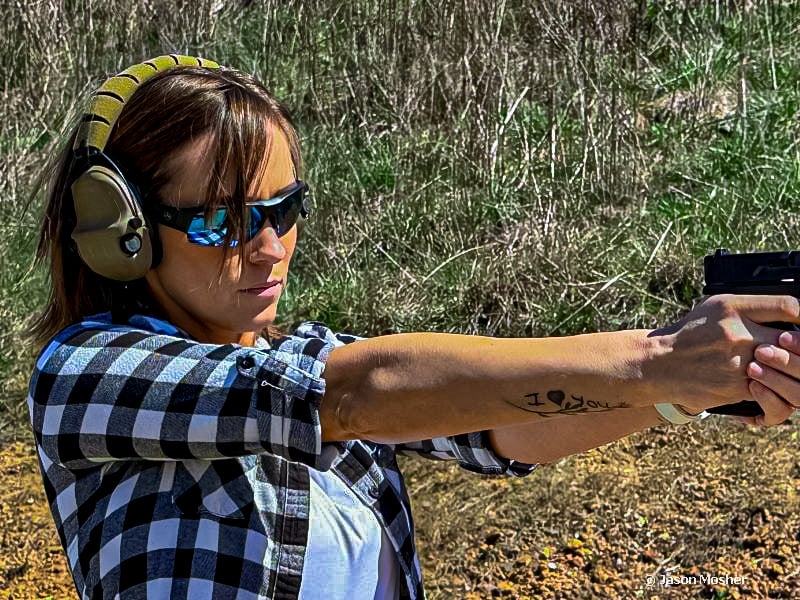
All firearms training classes will require eye protection while on the range. Grabbing a cheap pair of sunglasses sounds easy, but there are a couple of things to remember. First, a pair of glasses with a ballistic rating are preferred. These types of glasses are made to withstand impact if something ricochets while shooting. Second, find a pair with an optional clear lens or take two pairs. I’ve been on the range when it’s sunny, and tinted glasses are needed. But when it gets cloudy, you may not be able to see with sunglasses on.
Quality Magazines
There are a ton of magazines on the market, and many of them work just fine. But make sure the magazines work before you show up to a training class. In my experience, the number one item that causes failure in handguns and rifles is the magazine. A great gun won’t do much good if the magazine does not feed the ammunition correctly. For AR-15s, I like to stick with Magpul when I’m going to training classes. I have other brands I use while on the range, but I have never had a Magpul magazine fail.
For pistol magazines, factory mags are the best way to go. Again, there are plenty of other good brands out there. If you have used them enough that you’re comfortable with how they work, then go with it. But if you have not tested your off-brand mags extensively, I would stick with factory mags.
Cleaning Kit and Oil
The last two-day rifle course I attended was a blast and involved about 17 hours of shooting between the two days. After the end of the first day, someone asked to borrow my gun oil because their gun was starting to have cycling issues. He forgot to add a little extra oil before he started shooting, and his gun was dry and had a lot of buildup on the bolt. Some guns do better than others without oil, but guns are little machines, and machines need oil.
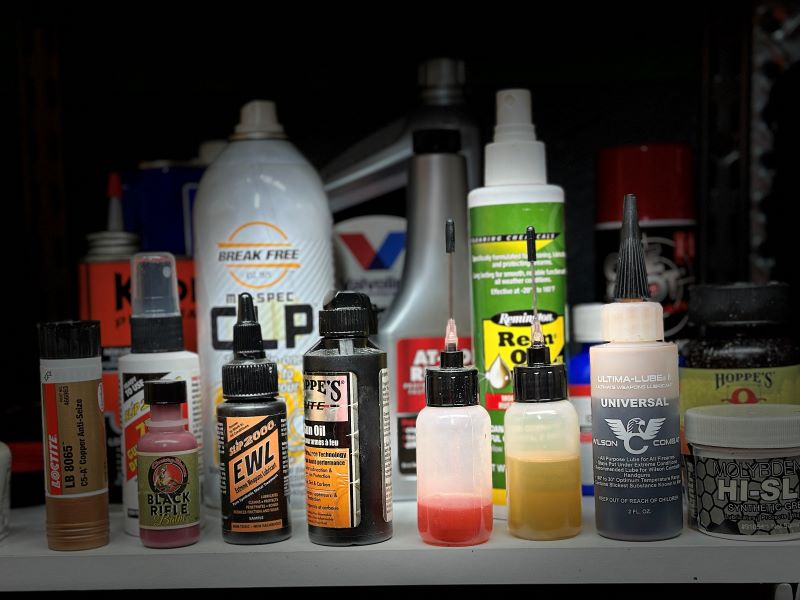
Besides keeping your firearms oiled while shooting, don’t forget to clean them when you’re shooting a lot of ammo. Some like to see how long they can shoot their gun without cleaning it, and that’s fine if you want to do that. However, keeping a gun clean and lubricated helps it perform better and extends the life of the firearm. It also keeps the class running smoother when you don’t have to stop for gun problems. When I’m away at training, I clean my gun each evening after class.
Extra Batteries
Here’s another simple one that is often overlooked: batteries. Most people today use some type of battery-powered optic on their rifles and/or handguns. They also use flashlights, lasers, IR illuminators, and other battery-powered items. Most optics have impressive run times and shouldn’t need a battery very often. And yet, in every class I’ve been to, people are looking for batteries (including me). Now, I keep a small plastic container in my range bag with extra batteries for anything mounted on my guns.
Go prepared and shoot with confidence.
Firearms training classes are a blast, and I’ve learned something new from each one I’ve attended. But nothing hinders that training more than equipment problems in the middle of a session. When you must stop and go fix something, adjust your belt, or mess with a magazine, it hinders your training. Put some thought into everything you plan to take with you before the training class.
A checklist works great to make sure you don’t forget anything. From clothes, boots, and safety equipment to guns, holsters, and ammo, make sure each item will function properly. Some training classes are expensive, and you don’t want to lose out on valuable training because of equipment failure. Take a trip to the range to “practice” with all your gear before going to the class. When everything functions as it should, you will learn more and have fun while doing it.
The post Essential Gear for Firearms Courses appeared first on The Mag Life.
Read the full article here

